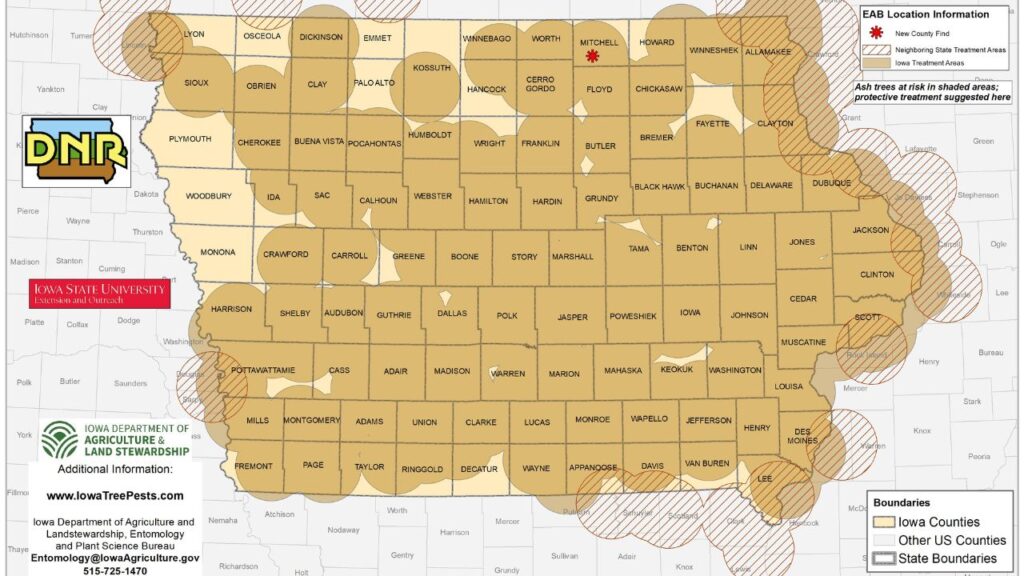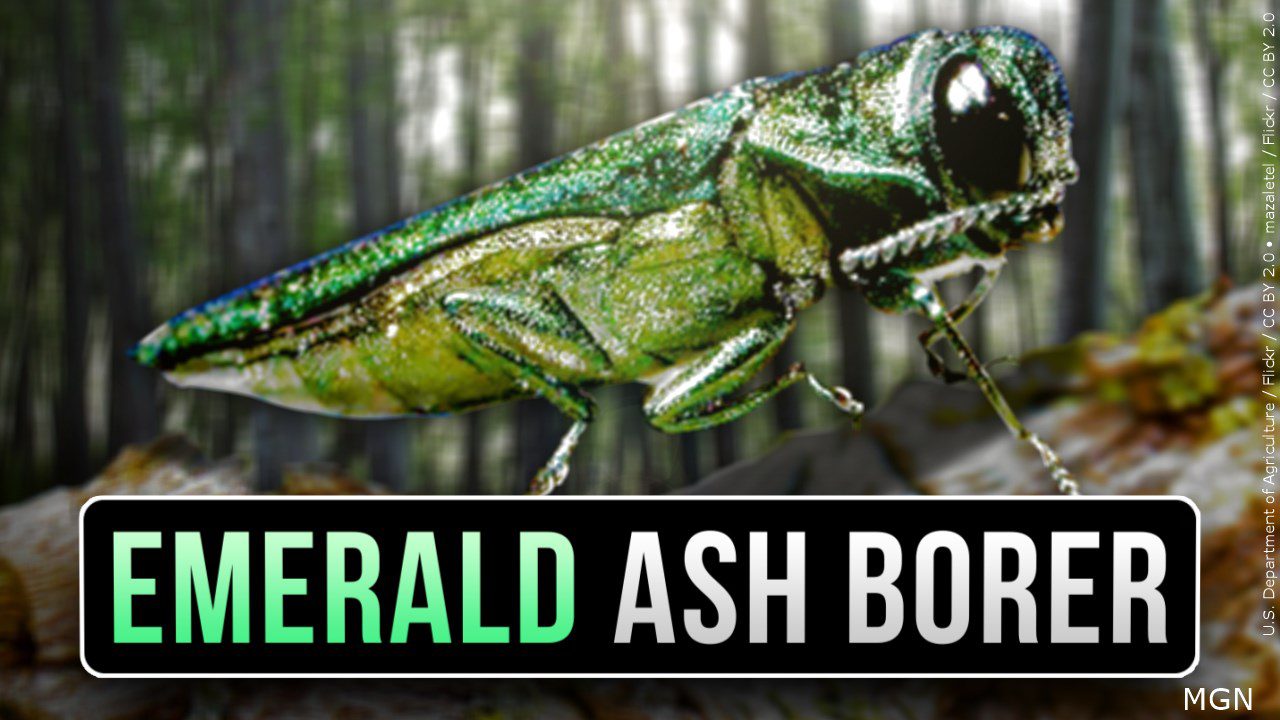Emerald ash borer, ash tree-killing insect, confirmed in Mitchell County
[anvplayer video=”5136264″ station=”998128″]
(ABC 6 News) – The Iowa Department of Agriculture and Land Stewardship announced on Tuesday that the Emerald ash borer (EAB) has been confirmed in Mitchell County for the first time.

The invasive, ash tree-killing insect from Asia, has now been confirmed in all but 6 of Iowa’s 99 counties.
EAB larvae were collected near Spring Park in rural Osage by the Iowa Department of Agriculture and Land Stewardship with federal identification confirming the samples were positive for EAB.
EAB is a significant threat to native ash tree species, typically killing a tree within two to four years after becoming infested.
The cumulative damage by the larvae (immature stage) feeding on the inner bark eventually kills ash trees. The feeding cuts off the tree’s ability to transport water and nutrients.
Indicators of an infestation may include canopy thinning, leafy sprouts shooting from the trunk or main branches, serpentine (“S”-shaped) galleries under the bark, bark splitting, woodpecker damage, and 1/8-inch D-shaped exit holes.

Courtesy: MGN / U.S. Department of Agriculture / Flickr / CC BY 2.0
Landowners and managers can remove declining ash trees and replace them with other species, or use preventive insecticide treatments to preserve and protect valuable and healthy ash trees.
The best time to treat for EAB is in the spring, from mid-April to mid-May.
Insecticides are most effective when the ash tree is actively growing and uptake is at its peak.
Tree service companies can apply insecticide trunk injections through the summer if soil moisture is available.
Additional information on EAB, including a county detection map, can be found by CLICKING HERE.